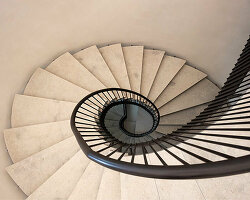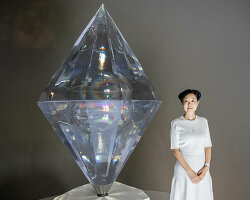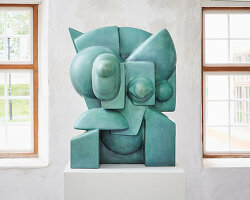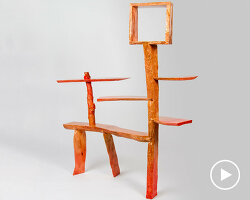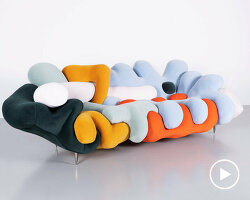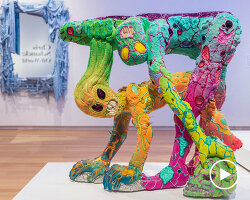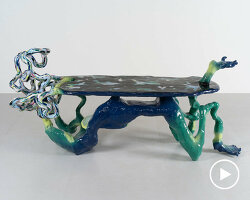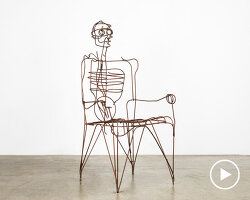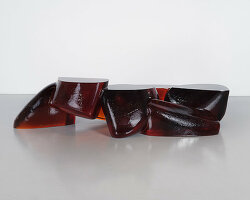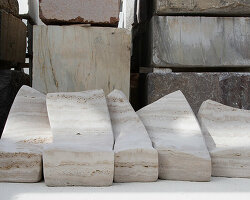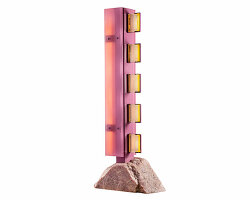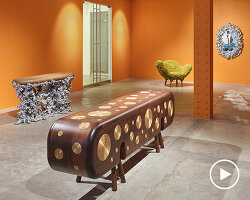on april 1, 2020, new york gallery friedman benda initiated a series of online interviews aimed at connecting individuals across the world with leading voices in the creative field. design in dialogue is a conversational program hosted alternately by curator and historian glenn adamson and designer stephen burks that engages with designers, makers, critics, and curators as they reflect on their careers and creative processes. against the backdrop of COVID-19 and global lockdowns, the conversations are held virtually on zoom for 1 hour for anyone in the world to tune in to, and include a participatory Q&A with the audience in attendance. friedman benda has since presented more than 90 episodes, and will continue with a lineup of future guests, each offering unparalleled insight into the sensibilities, musings, and memories of today’s creative protagonists. see our recent feature of jacques herzog on architecture as a karmic discipline, and ronan bouroullec on context, communication and collaboration.
on april 28, 2021 design in dialogue welcomed amanda williams, an artist whose work questions the ways that context changes the perception of the material culture of the built environment. trained as an architect, williams’ practice engages color as a way to draw attention to the complexities of race, place and value in cities. through an analysis of her projects currently on view at MoMA — colored theory, embodied sensations, and reconstructions: architecture & blackness in america — stephen burks and amanda williams discussed the role of architecture in controlling, oppressing, and valuing communities.
watch the full video interview at the top of the page and stay tuned as designboom continues to share design in dialogue features. see all past episodes — and RSVP for upcoming ones — here.
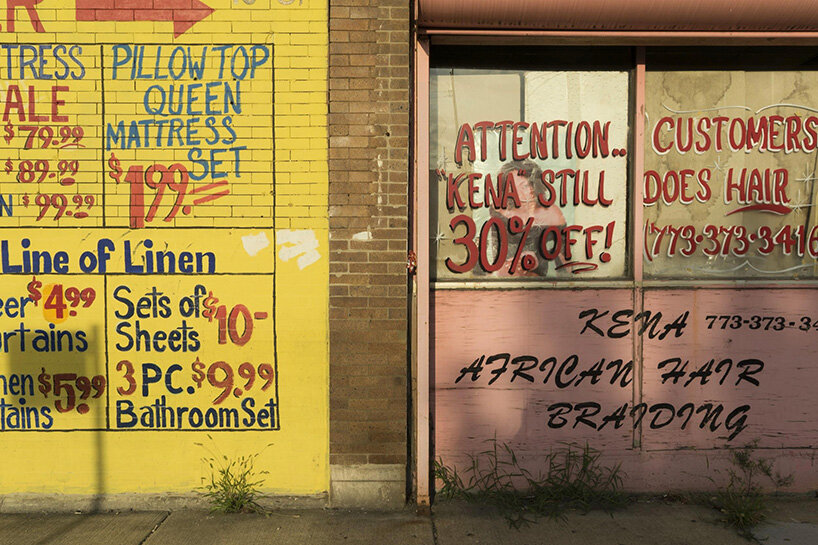

images from amanda williams’ ‘design in dialogue’ presentation of the vibrant urban palette of colors in chicago
williams began by discussing her upbringing in chicago and ‘coming of age’, artistically and creatively. rooted in academic understandings about urban planning, architecture and space, williams was also deeply inspired by the poetic narratives being spun by musical contemporaries, such as common. ‘for me, it was like, headphones on in the studio, learning about (daniel) burnham, hearing this conversation about the corner — this intersection,’ williams says about where she found herself at that time. ‘the love has always been for space, and understanding space. maybe in the last decade, really understanding what it means to be able to locate oneself in space and have control over that kind of process. so to really re-examine the ideas of power, racism, infrastructure, autonomy — all of these things through this lens of the purest understanding of space. then, really being able to expand and contract that, whether that’s conceptual space, physical space, social space, and letting that kind of morph.’
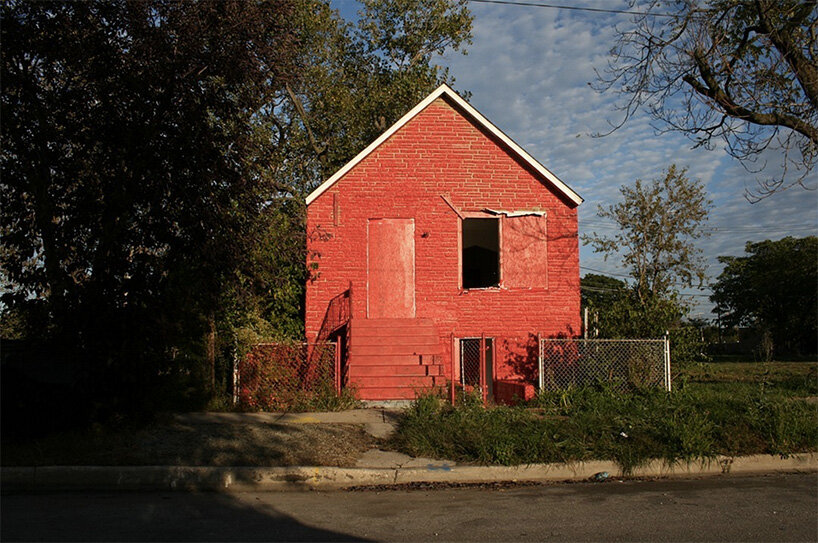
harold’s chicken shack (overall), part of the color(ed) theory series | image courtesy of amanda williams
williams found herself drawn to the vibrant palette of colors that traced the urban landscape of chicago — those used for street signage, in advertising, commercial purposes, and the larger cultural context. ‘these colors, they’re trying to draw your attention and hold your attention,’ she says, ‘but they’re also an extension of a kind of style and flair. that’s inherent in black creativity across the board. this is the kind of landscape I was traversing growing up, still traverse to this day.’
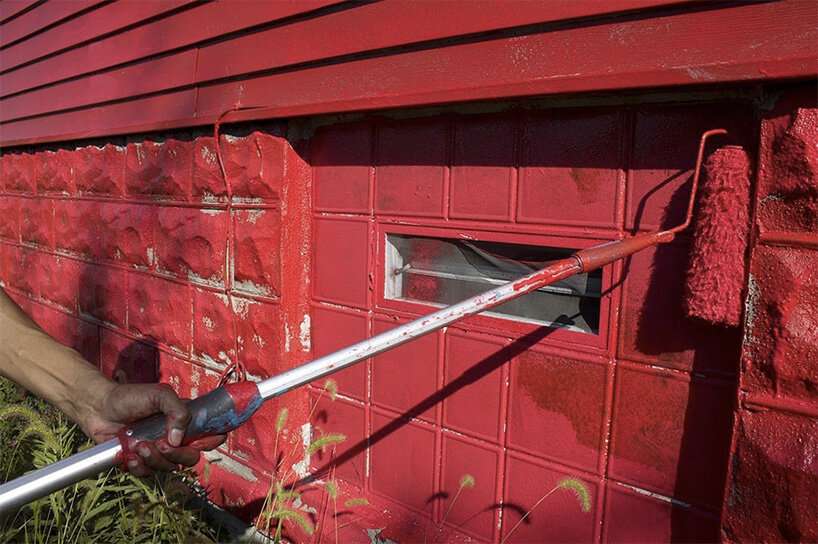
harold’s chicken shack (detail) | image courtesy of amanda williams
that vibrancy led williams to a deep preoccupation with color as ‘framing device to think through work’ — a theme that would go on to inform her color(ed) theory series. between 2014 – 2016, williams repainted and photographed eight vacated houses slated for demotion in the englewood neighborhood of chicago, drawing attention to the issue of underinvestment in african american communities. with the help of family, friends, and other members of the community, the buildings were painted in a palette of colors williams felt represented black consumer culture. ‘it took a few years, but really then came down to an idea about setting a palette that would be part of a lineage of conversations of different scholars and artists and designers developing these palettes over centuries, to really think about — what would I add to that conversation?’ she says. ‘it was me trying to really own this thing that I gained as a kind of skill set, but what does it really mean to be able to apply it in a way that brings me joy? there wasn’t a premeditation that it was going to turn into this large public work. it really was about a fixation of trying to think about this as a palette of some kind — not knowing how I wanted to apply it.’
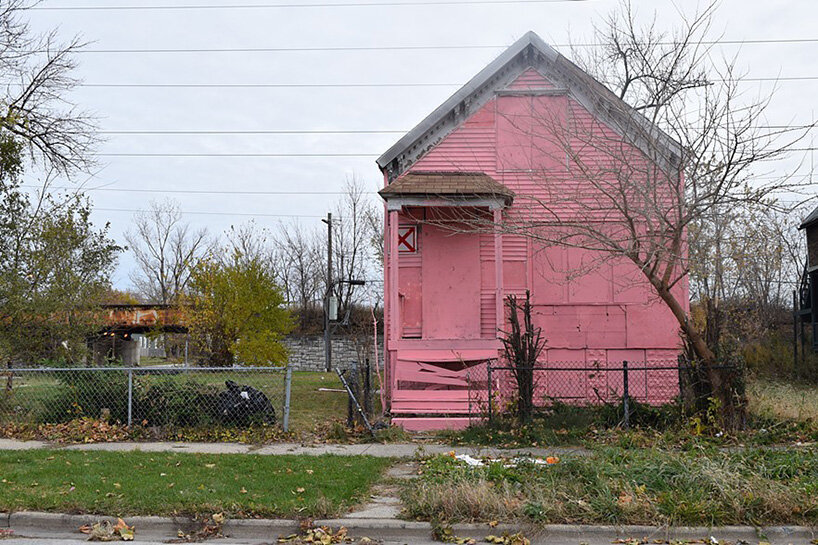
pink oil moisturizer (fall; overall), part of the color(ed) theory series | image courtesy of amanda williams
williams went on to discuss her participation in a group exhibition at MoMA — its first to explore the relationship between architecture and the spaces of african american and african diaspora communities. reconstructions: architecture and blackness in america presented 11 newly commissioned works by architects, designers, and artists that explored ways in which histories can be made visible and equity can be built. ‘when you see my project, you’ll see a series of emergency blankets, with tools and fragments that black people might use to navigate their way to free black space,’ williams said about her presentation. ‘there’s a vessel, which I have named the space-boat-ship-vessel-capsule, that is an imagined device to help you get to this mental and physical place of freedom. you’ll see a series of inventions created by african-american scientists, scholars, everyday folks that were inventing things as simple as water sprinkler nozzles, scaffolding devices, ice cream scoopers. I keyed in on an idea about inventions and how significant patenting was for acknowledging that everyone had a right to participate in making america the place that they wanted it to be.’
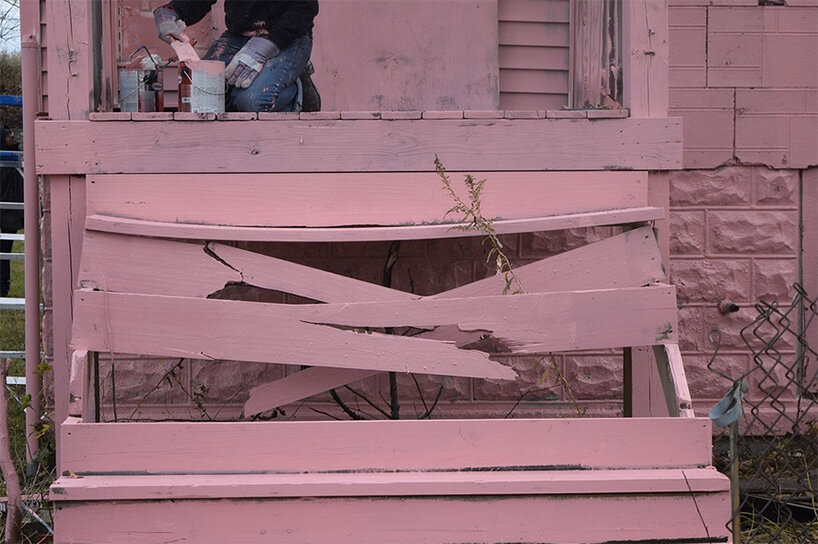
pink oil moisturizer (detail) | image courtesy of amanda williams
also on view at MoMA is williams’ participatory artwork, embodied sensations. williams considers the questions, who has the freedom to move? who has never been free to move at all? and the transformation of both public and virtual space during the pandemic. ‘it is grappling with ideas of social and physical mobility and immobility, and trying to think about this moment that we collectively find ourselves in,’ she says. ‘it also brings people who, for the first time, have felt isolation or a lack of inclusion together with all kinds of communities that have felt that way forever’. within the marron atrium, furniture that had been removed from around the museum to facilitate social distancing is re-installed at the center of the museum. visitors are invited to interact with the installation through in-person performances or digital participation. an online survey, asks for the anonymous participation of thought around four keywords — care, knowledge, access, and power. site visitors’ responses will, in turn, create instructions for physical movement at MoMA.
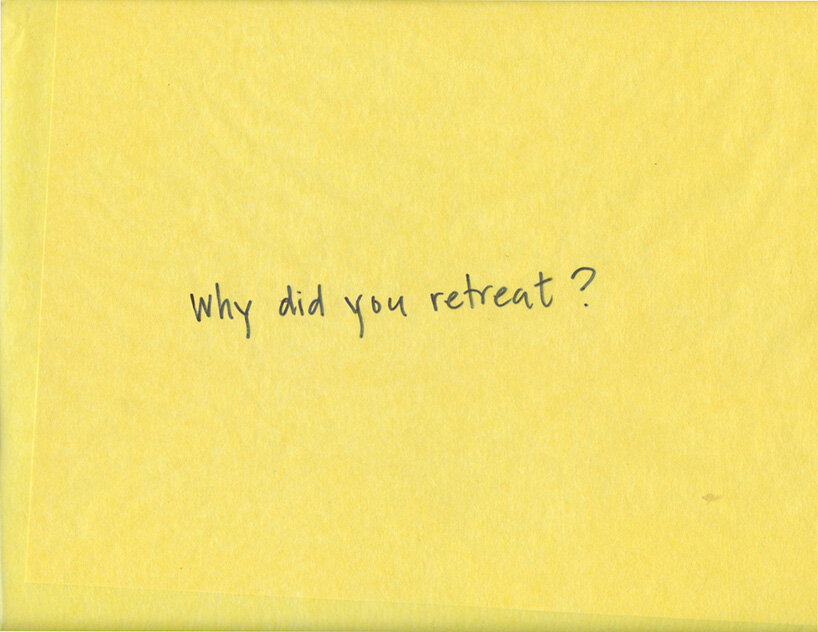
preparatory study for embodied sensations, 2021 at the museum of modern art
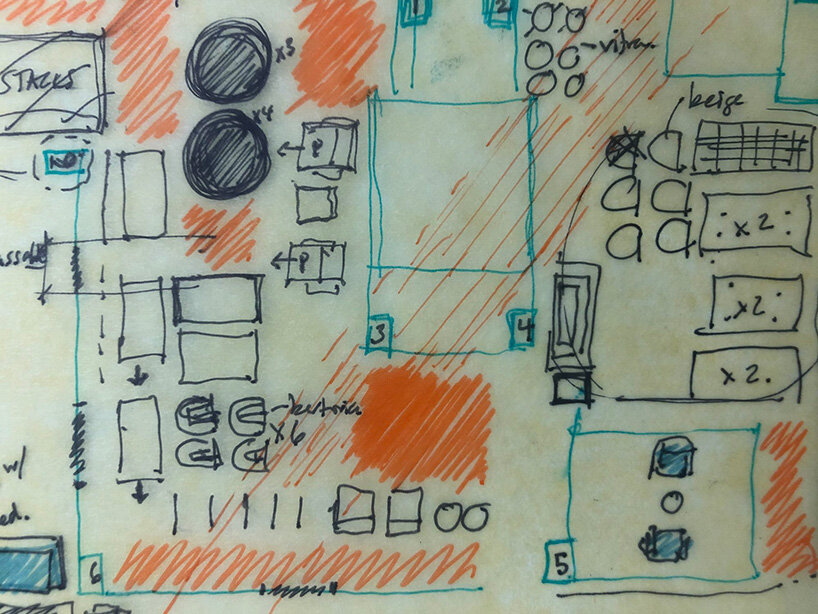
preparatory study for embodied sensations, 2021 at the museum of modern art
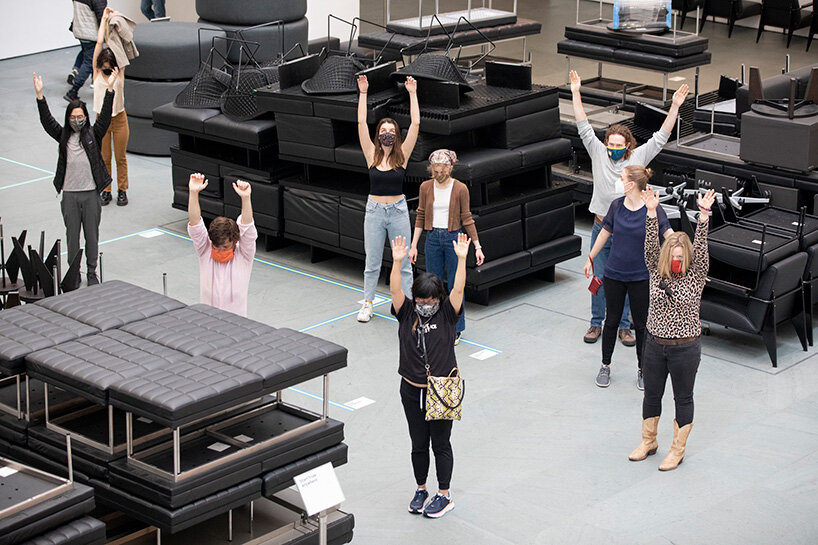
installation view of amanda williams: embodied sensations, 2021 at the museum of modern art
image by julieta cervantes © 2021 the museum of modern art
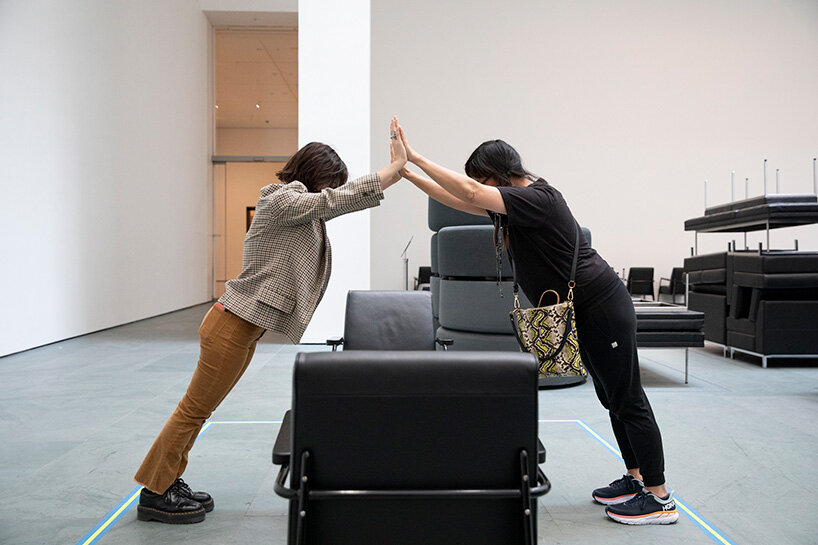
installation view of amanda williams: embodied sensations, 2021 at the museum of modern art
image by julieta cervantes © 2021 the museum of modern art
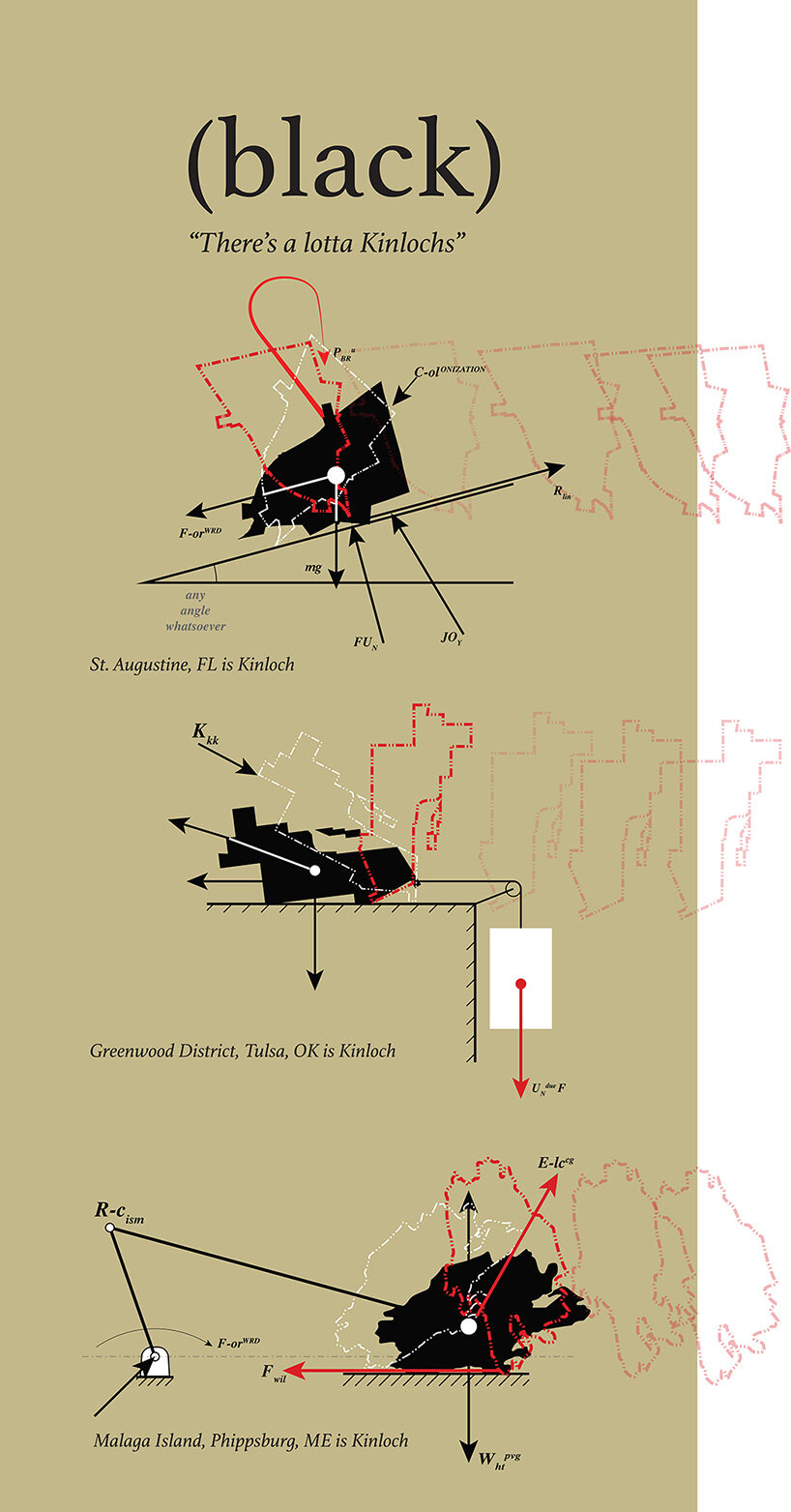
spatial diagrams, 2020 | ink on paper | 26 x 12” (66.04 x 30.48 cm)
image courtesy of amanda williams, the museum of modern art, new york
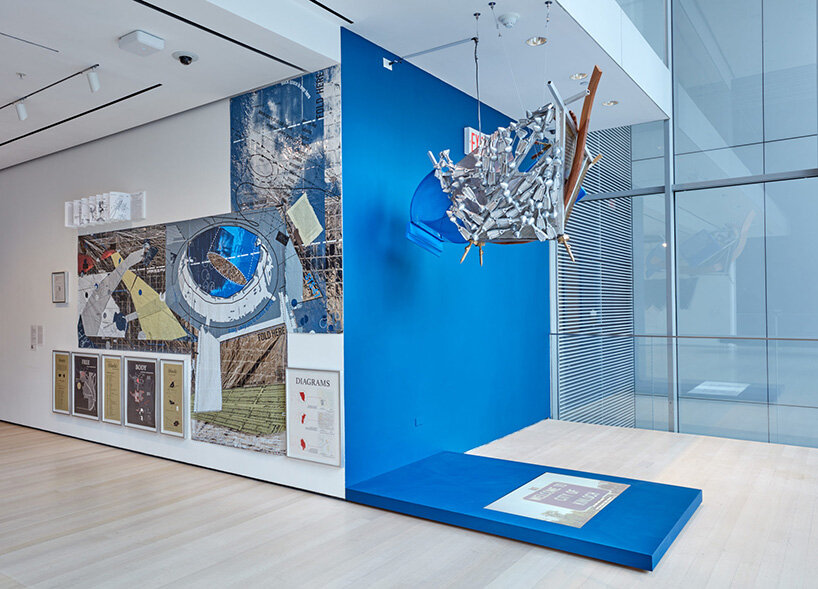
installation view of reconstructions: architecture and blackness in america at the museum of modern art, new york
february 27, 2021 – may 31, 2021 © 2021 the museum of modern art | image by robert gerhardt
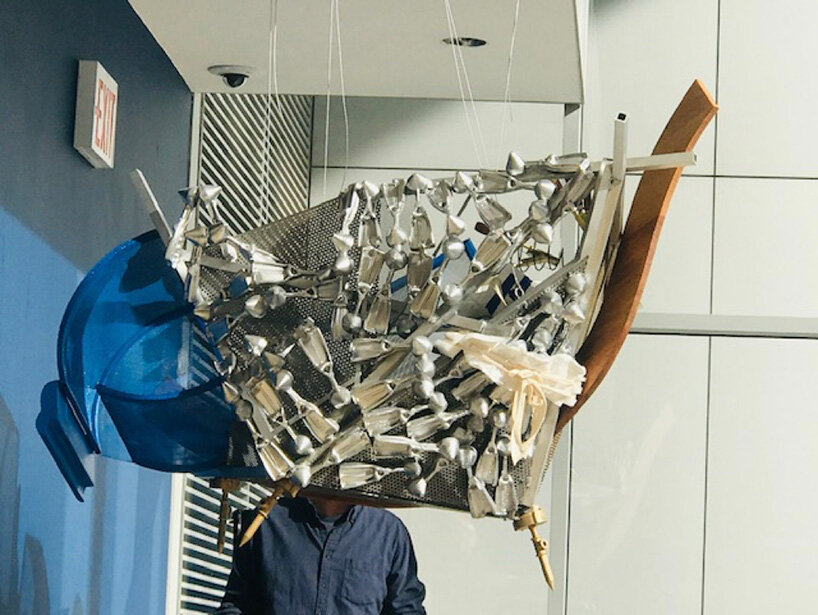
installation of we’re not down there we’re over here at the museum of modern art
image courtesy mabel wilson and sean anderson, 2021
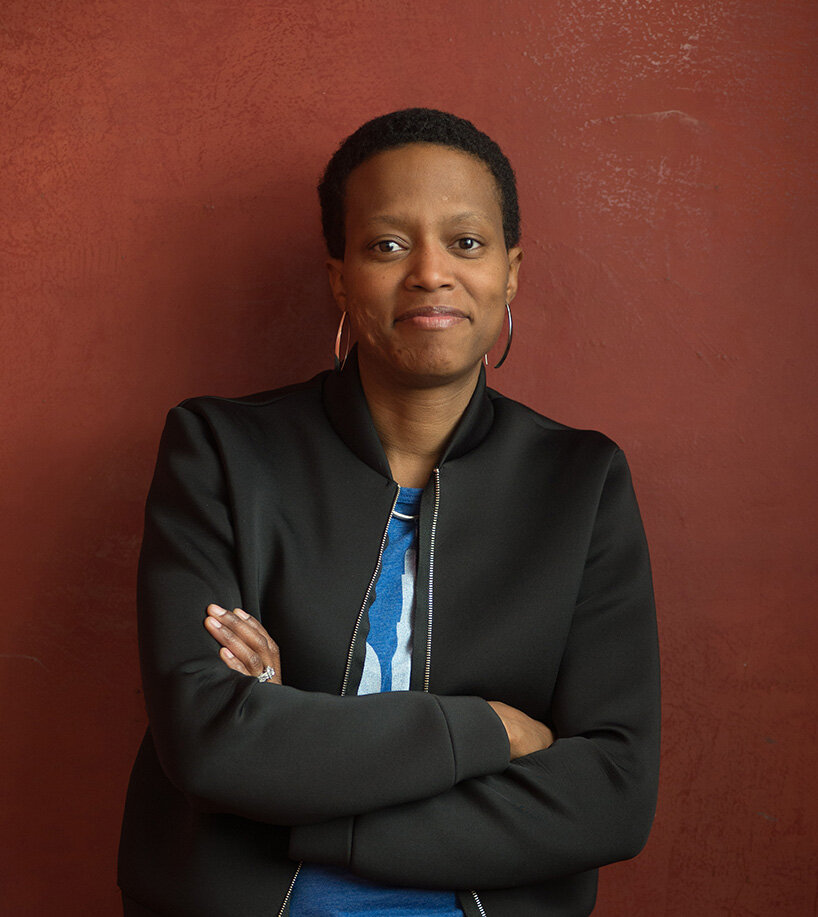
portrait of amanda williams, image by tony smith
—
design in dialogue is a series of online interviews presented by new york-based gallery friedman benda that highlights leading voices from the field — designers, makers, critics, and curators — as they discuss their work and ideas. hosted alternately by curator and historian glenn adamson and designer stephen burks, the conversations are held on zoom for 1 hour and include a participatory Q&A.
watch the full video interview with amanda williams at the top of the page and stay tuned as designboom continues to share design in dialogue features. see all past episodes — and RSVP for upcoming ones — here.
art interviews (138)
design in dialogue (32)
friedman benda (64)
PRODUCT LIBRARY
a diverse digital database that acts as a valuable guide in gaining insight and information about a product directly from the manufacturer, and serves as a rich reference point in developing a project or scheme.

